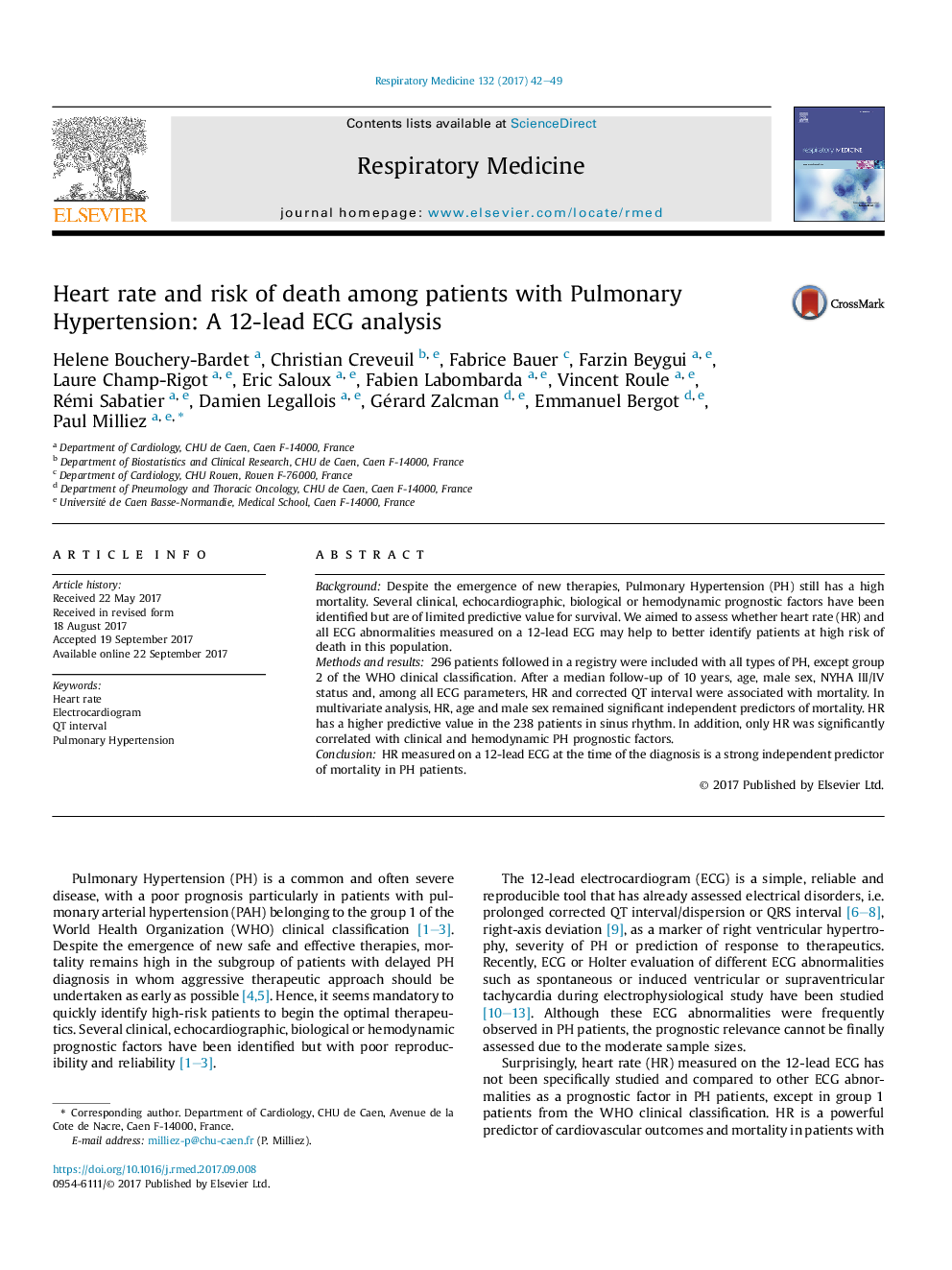| Article ID | Journal | Published Year | Pages | File Type |
|---|---|---|---|---|
| 5724795 | Respiratory Medicine | 2017 | 8 Pages |
â¢Heart rate is aimed to be assessed as an independent predictor of mortality in Pulmonary Hypertension patients.â¢All groups except group 2 of the WHO classification have been included in the analysis.â¢Heart rate was compared to all ECG abnormalities and to clinical and hemodynamic parameters.â¢Heart rate is a strong independent predictor of mortality in sinus rhythm patients over a median of 10-year follow-up.
BackgroundDespite the emergence of new therapies, Pulmonary Hypertension (PH) still has a high mortality. Several clinical, echocardiographic, biological or hemodynamic prognostic factors have been identified but are of limited predictive value for survival. We aimed to assess whether heart rate (HR) and all ECG abnormalities measured on a 12-lead ECG may help to better identify patients at high risk of death in this population.Methods and results296 patients followed in a registry were included with all types of PH, except group 2 of the WHO clinical classification. After a median follow-up of 10 years, age, male sex, NYHA III/IV status and, among all ECG parameters, HR and corrected QT interval were associated with mortality. In multivariate analysis, HR, age and male sex remained significant independent predictors of mortality. HR has a higher predictive value in the 238 patients in sinus rhythm. In addition, only HR was significantly correlated with clinical and hemodynamic PH prognostic factors.ConclusionHR measured on a 12-lead ECG at the time of the diagnosis is a strong independent predictor of mortality in PH patients.
